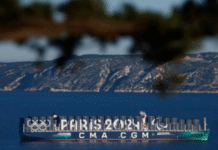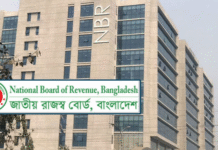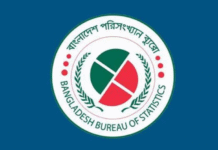Part I:
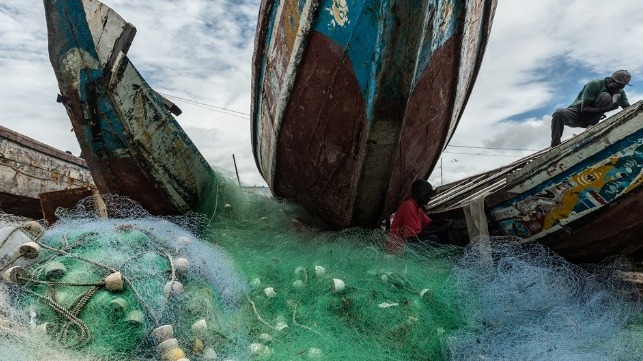
[This article appeared first in The New Yorker and is reproduced here courtesy of The Outlaw Ocean Project.]
Gunjur, a town of some fifteen thousand people, sits on the Atlantic coastline of southern Gambia, the smallest country on the African continent. During the day, its white-sand beaches are full of activity. Fishermen steer long, vibrantly painted wooden canoes, known as pirogues, toward the shore, where they transfer their still-fluttering catch to women waiting at the water’s edge. The fish are hauled off to nearby open-air markets in rusty metal wheelbarrows or in baskets balanced on heads. Small boys play soccer as tourists watch from lounge chairs. At nightfall, work ends and the beach is dotted with bonfires. There is drumming and kora lessons; men with oiled chests grapple in traditional wrestling matches.
Hike five minutes inland, and you’ll find a more tranquil setting: a wildlife reserve known as Bolong Fenyo. Established by the Gunjur community in 2008, the reserve is meant to protect seven hundred and ninety acres of beach, mangrove swamp, wetland, savannah, and an oblong lagoon. The lagoon, a half mile long and a few hundred yards wide, has been a lush habitat for a remarkable variety of migratory birds as well as humped-back dolphins, epaulet fruit bats, Nile crocodiles, and callithrix monkeys. A marvel of biodiversity, the reserve has been integral to the region’s ecological health—and, with hundreds of birders and other tourists visiting each year, to its economic health, too.
But on the morning of May 22, 2017, the Gunjur community discovered that the Bolong Fenyo lagoon had turned a cloudy crimson overnight, dotted with floating dead fish. “Everything is red,” one local reporter wrote, “and every living thing is dead.” Some residents wondered if the apocalyptic scene was an omen delivered in blood. More likely, ceriodaphnia, or water fleas, had turned the water red in response to sudden changes in pH or oxygen levels. Locals soon reported that many of the birds were no longer nesting near the lagoon.
A few residents filled bottles with water from the lagoon and brought them to the one person in town they thought might be able to help—Ahmed Manjang. Born and raised in Gunjur, Manjang now lives in Saudi Arabia, where he works as a senior microbiologist. He happened to be home visiting his extended family, and he collected his own samples for analysis, sending them to a laboratory in Germany. The results were alarming. The water contained double the amount of arsenic and forty times the amount of phosphates and nitrates deemed safe. The following spring, he wrote a letter to Gambia’s environmental minister, calling the death of the lagoon “an absolute disaster.” Pollution at these levels, Manjang concluded, could only have one source: illegally dumped waste from a Chinese fish-processing plant called Golden Lead, which operates on the edge of the reserve. Gambian environmental authorities fined the company twenty-five thousand dollars, an amount that Manjang described as “paltry and offensive.”
Golden Lead is one outpost of an ambitious Chinese economic and geopolitical agenda known as the Belt and Road Initiative, which the Chinese government has said is meant to build goodwill abroad, boost economic cooperation, and provide otherwise inaccessible development opportunities to poorer nations. As part of the initiative, China has become the largest foreign financier of infrastructure development in Africa, cornering the market on most of the continent’s road, pipeline, power plant and port projects. In 2017, China cancelled fourteen million dollars in Gambian debt and invested thirty-three million to develop agriculture and fisheries, including Golden Lead and two other fish-processing plants along the fifty-mile Gambian coast. The residents of Gunjur were told that Golden Lead would bring jobs, a fish market, and a newly paved, three-mile road through the heart of town.
Golden Lead and the other factories were rapidly built to meet an exploding global demand for fishmeal—a lucrative golden powder made by pulverizing and cooking fish. Exported to the United States, Europe, and Asia, fishmeal is used as a protein-rich supplement in the booming industry of fish farming, or aquaculture. West Africa is among the world’s fastest-growing producers of fishmeal: more than fifty processing plants operate along the shores of Mauritania, Senegal, Guinea Bissau, and Gambia. The volume of fish they consume is enormous: one plant in Gambia alone takes in more than seven thousand five hundred tons of fish a year, mostly of a local type of shad known as bonga—a silvery fish about ten inches long.
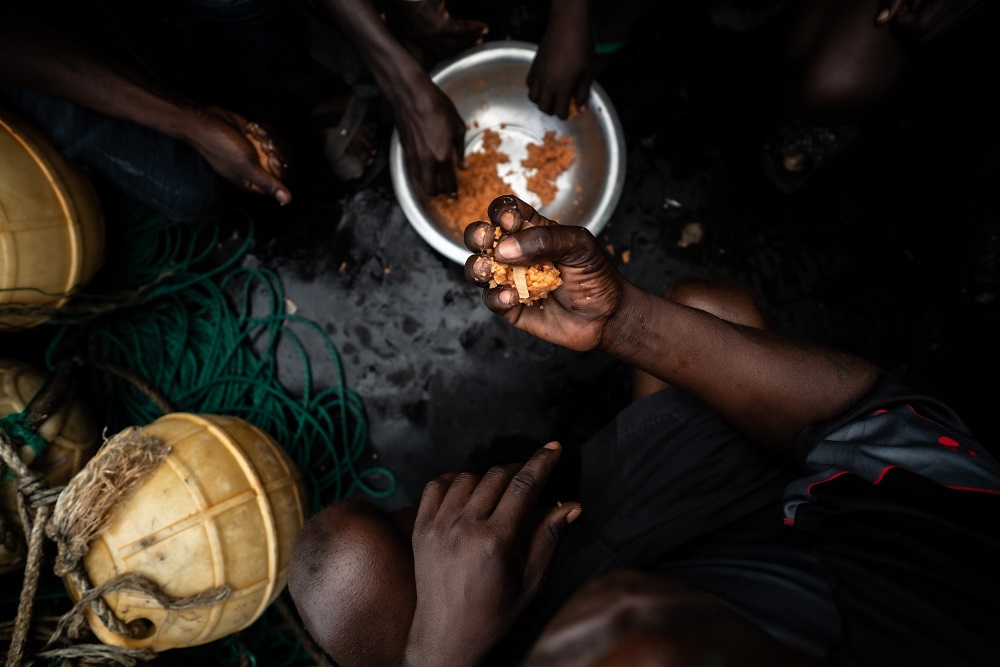
Gambian fishermen holding fistfuls of fish meal (Copyright Fabio Nascimento / The Outlaw Ocean Project)
For the area’s local fishermen, most of whom toss their nets by hand from pirogues powered by small outboard motors, the rise of aquaculture has transformed their daily working conditions: hundreds of legal and illegal foreign fishing boats, including industrial trawlers and purse seiners, crisscross the waters off the Gambian coast, decimating the region’s fish stocks and jeopardizing local livelihoods.
At the Tanji fish market in summer of 2019, Abdul Sisai stood at a table offering four sickly-looking catfish for sale. The table swarmed with flies, the air was thick with smoke from nearby curing sheds, and menacing seagulls dive-bombed for scraps. Sisai said that bonga had been so plentiful two decades ago that in some markets it had been given away for free. Now it costs more than most local residents can afford. He supplements his income by selling trinkets near the tourist resorts in the evenings.
“Sibijan deben,” Sisai said in Mandinka, one of the major languages in Gambia. Locals use the phrase, which refers to the shade of the tall palm tree, to describe the effects of extractive export industries: the profits are enjoyed by people far from the source—the trunk. In the past several years, the price of bonga has increased exponentially, according to the Association for the Promotion and Empowerment of Marine Fishers, a Senegalese-based research-and-education group. Half the Gambian population lives below the international poverty line—and fish, primarily bonga, accounts for half of the country’s animal-protein needs.
After Golden Lead was fined, in 2019, it stopped releasing its toxic effluent directly into the lagoon. Instead, it ran a long wastewater pipe under a nearby public beach, dumping waste directly into the sea. Swimmers soon started complaining of rashes, the ocean grew thick with seaweed, and thousands of dead fish washed ashore, along with eels, rays, turtles, dolphins, and even whales. Residents burned scented candles and incense to combat the rancid odor coming from the fish meal plants, and tourists wore white masks. The stench of rotten fish clung to clothes, even after repeated washing.
Jojo Huang, the director of the plant, has said publicly that the facility follows all regulations and “does not pump chemicals into the sea.” The plant has benefited the town, she told The Guardian.
In March 2018, about a hundred and fifty local shopkeepers, youth and fishermen, wielding shovels and pickaxes, gathered on the beach to dig up the pipe and destroy it. Two months later, with the government’s approval, workers from Golden Lead installed a new pipe, this time planting a Chinese flag alongside it. The gesture carried colonialist overtones. One local called it “the new imperialism.”
Manjang was outraged. “It makes no sense!” he told me, when I visited him in Gunjur at his family compound, an enclosed three-acre plot with several simple brick houses and a garden of cassava, orange, and avocado trees. Behind Manjang’s thick-rimmed glasses, his gaze is gentle and direct as he speaks urgently about the perils facing Gambia’s environment. “The Chinese are exporting our bonga fish to feed it to their tilapia fish, which they’re shipping back here to Gambia to sell to us, more expensively—but only after it’s been pumped full of hormones and antibiotics.” Adding to the absurdity, he noted, is that tilapia are herbivores that normally eat algae and other sea plants, so they have to be trained to consume fish meal.
Manjang contacted environmentalists and journalists, along with Gambian lawmakers, but was soon warned by the Gambian trade minister that pushing the issue would only jeopardize foreign investment. Dr. Bamba Banja, the head of the Ministry of Fisheries and Water Resources, was dismissive, telling a local reporter that the awful stench was just “the smell of money.”
Global demand for seafood has doubled since the nineteen-sixties. Our appetite for fish has outpaced what we can sustainably catch: more than eighty per cent of the world’s wild fish stocks have collapsed or are unable to withstand more fishing. Aquaculture has emerged as an alternative—a shift, as the industry likes to say, from capture to culture.
The fastest-growing segment of global food production, the aquaculture industry is worth a hundred and sixty billion dollars and accounts for roughly half of the world’s fish consumption. Even as retail seafood sales at restaurants and hotels have plummeted during the pandemic, the dip has been offset in many places by the increase in people cooking fish at home. The United States imports eighty percent of its seafood, most of which is farmed. The bulk of that comes from China, by far the world’s largest producer, where fish are grown in sprawling landlocked pools or in pens offshore spanning several square miles.
Aquaculture has existed in rudimentary forms for centuries, and it does have some clear benefits over catching fish in the wild. It reduces the problem of bycatch—the thousands of tons of unwanted fish that are swept up each year by the gaping nets of industrial fishing boats, only to suffocate and be tossed back into the sea. And farming bivalves—oysters, clams, and mussels—promises a cheaper form of protein than traditional fishing for wild-caught species. In India and other parts of Asia, these farms have become a crucial source of jobs, especially for women. Aquaculture makes it easier for wholesalers to ensure that their supply chains are not indirectly supporting illegal fishing, environmental crimes, or forced labor. There’s potential for environmental benefits, too: with the right protocols, aquaculture uses less fresh water and arable land than most animal agriculture. Farmed seafood produces a quarter of the carbon emissions per pound that beef does, and two-thirds of what pork does.
Still, there are also hidden costs. When millions of fish are crowded together, they generate a lot of waste. If they’re penned in shallow coastal pools, the solid waste turns into a thick slime on the seafloor, smothering all plants and animals. Nitrogen and phosphorus levels spike in surrounding waters, causing algal blooms, killing wild fish, and driving away tourists. Bred to grow faster and bigger, the farmed fish sometimes escape their enclosures and threaten indigenous species.
Even so, it’s clear that if we are to feed the planet’s growing human population, which depends on animal protein, we will need to rely heavily on industrial aquaculture. Leading environmental groups have embraced this idea. In a 2019 report, the Nature Conservancy called for more investment in fish farms, arguing that by 2050 the industry should become our primary source of seafood. Many conservationists say that fish farming can be made even more sustainable with tighter oversight, improved methods for composting waste, and new technologies for recirculating the water in on-land pools. Some have pushed for aquaculture farms to be located farther from shore in deeper waters with faster and more diluting currents.
The biggest challenge to farming fish is feeding them. Food constitutes roughly seventy per cent of the industry’s overhead, and so far the only commercially viable source of feed is fish meal. Perversely, the aquaculture farms that produce some of the most popular seafood, such as carp, salmon, or European sea bass, actually consume more fish than they ship to supermarkets and restaurants. Before it gets to market, a “ranched” tuna can eat more than fifteen times its weight in free-roaming fish that has been converted to fishmeal. About a quarter of all fish caught globally at sea end up as fish meal, produced by factories like those on the Gambian coast. Researchers have identified various potential alternatives—including human sewage, seaweed, cassava waste, soldier-fly larvae, and single-cell proteins produced by viruses and bacteria—but none is being produced affordably at scale. So, for now, fish meal it is.
The result is a troubling paradox: the seafood industry is ostensibly trying to slow the rate of ocean depletion, but by farming the fish we eat most, it is draining the stock of many other fish—the ones that never make it to the aisles of Western supermarkets. Gambia exports much of its fish meal to China and Norway, where it fuels an abundant and inexpensive supply of farmed salmon for European and American consumption. Meanwhile, the fish Gambians themselves rely on for their survival are rapidly disappearing.
Ian Urbina is the director of The Outlaw Ocean Project, a non-profit journalism organization based in Washington DC that focuses on environmental and human rights concerns at sea globally.
This article appears here courtesy of The Outlaw Ocean Project. In Part II, the story will continue with Gambia’s enforcement efforts and Sea Shepherd’s supporting role. ???????
The opinions expressed herein are the author’s and not necessarily those of The Maritime Executive.

